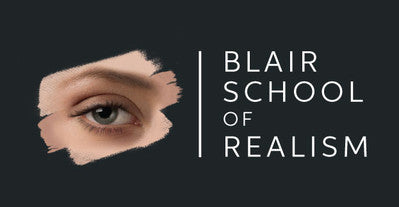There's lots of chatter about how the use of stencils somehow gives an airbrush artist a great advantage, so much that some artists boast about not using stencils and airbrushing completely freehand. Stencils do offer an advantage, but not in the way most people think.
Two types:
Airbrush artists use two different types of stencils. One type is the proportional stencil, used to establish, well... the proportions. It establishes the position of elements and shapes, so that the painting proportionally resembles the subject.

You might see this type of hand-made stencil in animals and portrait work, where the shapes are cut out and sprayed through to place the eyes, nose, mouth, body, feet, etc in the right place and at the correct scale. This ensures the elements and overall shape will correspond precisely to the subject.
The other type of stencil used by an airbrush artist is the texture stencil, whereas small detailed shapes are used to suggest different surfaces. This type of stencil greatly speeds up the painting process and allows a superior outcome when used correctly.

The proportional stencil is much more misunderstood and quite often maligned, with many non-users under the impression that a proportional stencil will "paint it for you."
If only that were true.
The proportional stencil is used widely in workshops, and functions as a time saver, but it only will take the painting so far as seen in this example. Here you see the limit of the proportional stencil use in a painting.

Compare it to the finished painting, and you'll quickly realize that the proportional stencil will only take you about 5% of the way to a finished painting. It does establish the proportions very quickly, along with some crisp edges, however it doesn't contribute anything further to the painting.
The step between spraying through the proportion stencil and the final painting is huge, requiring an input of several things including:
-
Edge management
-
Color matching
-
Color blending
-
Texture rendering
-
Subtlety
-
Details
To accomplish this, one needs to develop their observational skills, namely determining the difference between the painting and the subject, whether it be a nice model or a photograph. It's more challenging than it sounds, even with the proportions established and many of the colors matched to the reference.
What happens without a stencil?
Without a stencil, paintings still progress, but at a much slower pace.

Here is student work by Haden Luff, from my freehand workshop, where no stencils were used. It took longer, but the results are similar to paintings created using a proportional stencil. The freehand painting took over 19 hours, compared to 4.5 hours where stencils and other tools, were used.
There are alternative methods to achieve correct proportions, such as the grid method, projection method, tracing, etc. Many of these methods were practiced in my earlier workshops, but they were determined to be a bottleneck, slowing down the entire class. For that reason, myself and other instructors choose to utilize the speed advantage that proportional stencils provide.
It's clear that a proportional stencil offers two main advantages compared to freehand work: speed and hard edges. But do proportional stencils really do most of the work in completing a painting? Its easy to see that they do not. However, if time is a factor, then proportional stencils are worth considering, especially in a classroom environment.





Ryan Barkley
August 27, 2023
Great article as always Dru.
Katharine Andrews
April 16, 2024
aaaaahhhhh I wondered why you had created the stencils instead of teaching freehand or making our own out of paper in the classroom. Makes a lot of sense, especially with the skin texture, nothing worse than doing all those little dots and suddenly ending up with a blow out!! Just wondering though, do you still give a quick demonstration in the class of how to achieve some of these textures freehand so that artists aren’t restricted to using stencils?